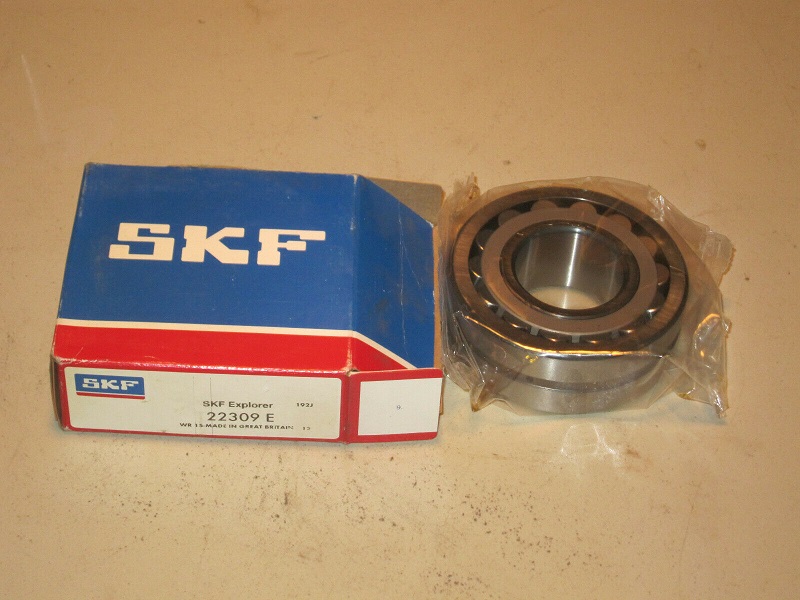
 News
NewsAfter the SKF bearing is installed, in order to check whether the installation is correct, it is necessary to perform a running check. Small machines can be rotated by hand to confirm whether they rotate smoothly. The inspection items include improper operation due to foreign bodies, scars, and indentations, unstable torque due to poor installation and poor processing of the mounting seat, excessive torque due to too small clearance, installation error, and seal friction, etc. Wait. If there is no abnormality, power operation can be started. Large-scale machinery cannot be rotated manually, so immediately cut off the power after starting without load, and the machinery is idling. Check for vibration, noise, and contact with rotating parts. After confirming that there is no abnormality, enter the power operation.
The power operation starts at a low speed with no load and slowly increases to the rated operation under the specified conditions. The items to be checked during the test run are whether there are abnormal sounds, changes in SKF bearing temperature, leakage or discoloration of lubricants, etc. If an abnormality is found, the operation should be stopped immediately, the machine should be inspected, and the bearing should be removed for inspection if necessary.
SKF bearing temperature can generally be estimated based on the external temperature of the bearing seat. However, it is more accurate to use the oil hole to directly measure the temperature of the outer ring of the bearing. The temperature of the bearing gradually increases from the start of operation, and usually stabilizes after 1 to 2 hours. If the bearing is installed improperly, the temperature will rise sharply, resulting in abnormally high temperature. The reasons include too much lubricant, too small bearing clearance, poor installation, and excessive friction of the sealing device. In the case of high-speed rotation, the wrong choice of SKF bearing structure and lubrication method is also the reason.
The rotation sound of SKF bearings is checked with a stethoscope, etc., there are strong metal noises, abnormal sounds, irregular sounds, etc., indicating abnormalities. The reasons include poor lubrication, poor shaft or bearing seat accuracy, bearing damage, and foreign matter intrusion.Eric Bearing Limited provides SKF Bearing 22309 E, contact us for more details.

Common faults of SKF bearings are as follows:
1. Corrosion of tile surface: Spectral analysis found that the concentration of non-ferrous metal elements is abnormal; there are many sub-micron wear particles of non-ferrous metal components in the iron spectrum; the moisture of lubricating oil exceeds the standard, and the acid value exceeds the standard.
2. Strain on the journal surface: there are iron-based cutting abrasive particles or black oxide particles in the iron spectrum, and there is a tempering color on the metal surface.
3. Corrosion of journal surface: Spectral analysis found that the concentration of iron element is abnormal, there are many sub-micron particles of iron in the iron spectrum, and the moisture or acid value of lubricating oil exceeds the standard.
4. Surface strain: cutting abrasive particles are found in the iron spectrum, and the abrasive particles are non-ferrous metals.
5. Fretting wear on the back of the tile: Spectral analysis found that the iron concentration is abnormal, there are many sub-micron wear particles of iron in the iron spectrum, and the lubricant moisture and acid value are abnormal.
Under liquid lubrication conditions, the sliding surface is separated by lubricating oil without direct contact, and friction loss and surface wear can be greatly reduced. The oil film also has a certain vibration absorption capacity
Not all damaged SKF bearings can be repaired, but for each damaged bearing before considering repair or replacement of a new bearing, the cause and extent of its damage must be evaluated to avoid or reduce damage again. There are many reasons for bearing damage, such as improper installation, dirt or moisture intrusion, etc., which are common causes of early bearing damage. Analysis of common causes of damage to SKF bearings and corresponding preventive measures that can prolong the life of SKF bearings.
A. Improper operation:
Improper installation, operation or disassembly may cause deformation or defect of the cage
Preventive measures: use appropriate operating, installation and removal tools
B. Insufficient lubrication:
Insufficient or improper lubrication may cause component scratches or severe bearing deformation
Preventive measures: improve the lubrication system, replenish or replace the lubricant regularly and appropriately
C. Rust and corrosion:
Contact with water may cause corrosion and rust of bearing components. Bearings damaged by corrosion may cause peeling during operation
Preventive measures: Check the seal regularly to ensure good sealing effect and store SKF bearings correctly
D. Current:
When SKF bearings are rotating, energization may cause grooves or nicks. When the bearing is stationary, improper electrical operation grounding can cause minor burns
Preventive measures: reduce or avoid current passing through the bearing through proper grounding connections before welding components other than SKF bearings
E. External materials:
Contamination of abrasive particles and intrusion of debris may cause wear, scratches and dents on the working surface of SKF bearings
Preventive measures: remove invading particles and debris, replace lubricants, check the sealing system
F. eccentric:
Eccentricity, tilt or excessive load may cause geometric stress concentration or surface peeling
Preventive measures: precise machining of SKF bearing seats and shoulders
When the bearings that are disassembled during the regular maintenance, operation and replacement of peripheral parts of SKF bearing equipment are stopped for inspection, it is necessary to judge whether the SKF bearing parts can be used again and record the good or bad use condition.
Secondly, check the raceway surface of the SKF bearing, the condition of the rolling surface and the joint surface, and the wear condition of the counter frame for damage and abnormal conditions. In particular, it is necessary to observe the running track of the raceway surface. To judge whether the bearing can be used again, it is necessary to consider the level of damage to the bearing, mechanical function, priority, operating conditions, inspection cycle, etc.